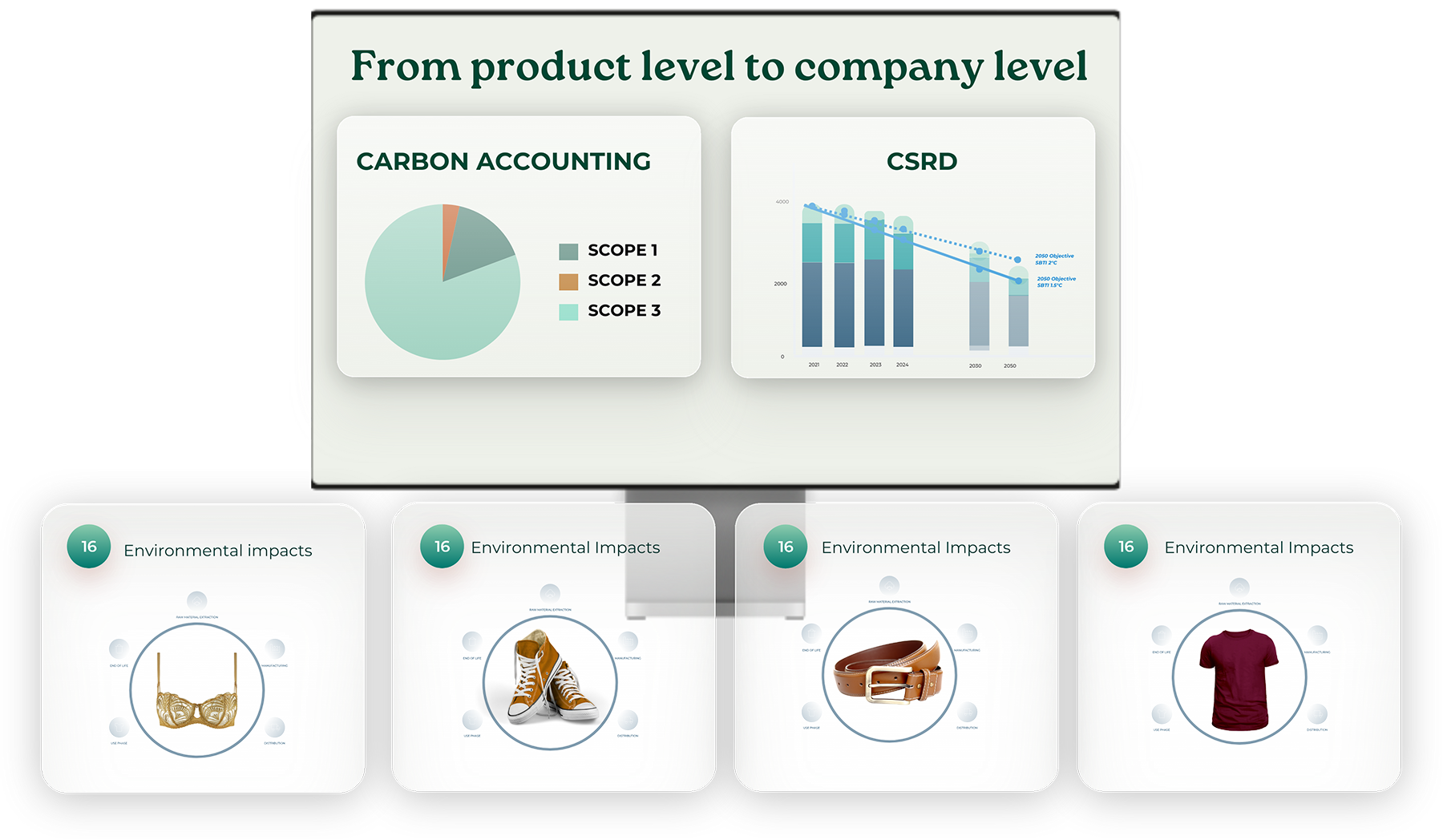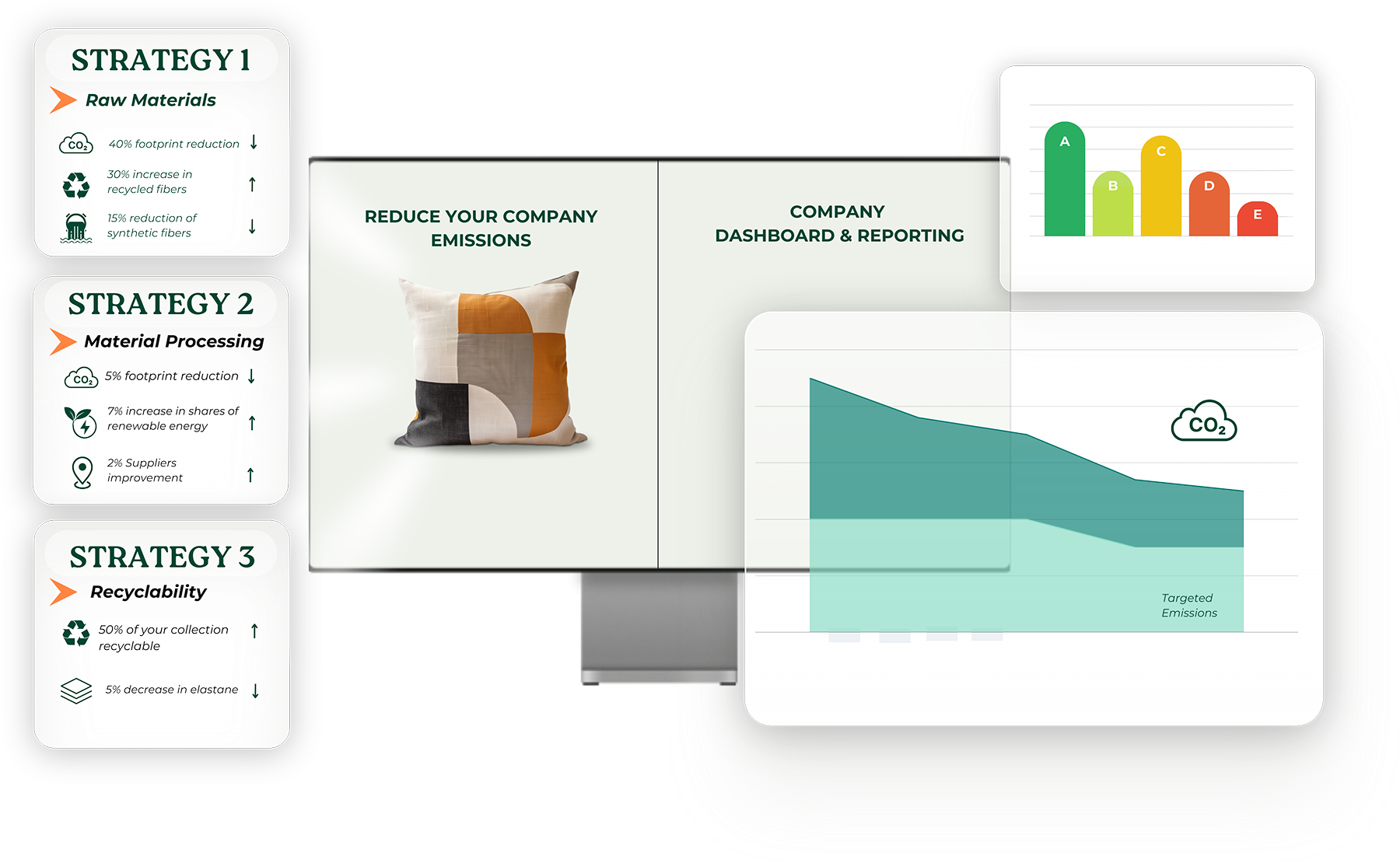How It Works: From Product Data to Strategic Impact
Data Capture

No black boxes. Every dataset and parameter is transparent and editable; start with robust defaults, layer supplier/facility data over time, and keep full control.
Product-level
It’s not about having perfect data. Start with what you already have -BOMs, material libraries, or PLM entries, and our engine fills the gaps with robust defaults. As your supplier and facility data improve, your results get sharper.
Company-level
Connect PLMs, Data Lakes, and traceability platforms via API/ETL. Whether you’re calculating complex products across thousands of SKUs, integration is seamless, and you stay in full control of your data.
Lifecycle Assessment
Product-level
Run automated SKU-level LCAs aligned with EU PEF, French Ecobalyse, and ISO 14040, and across 16 impact indicators. Enriched and disaggregated datasets replace averages for higher precision.
Company-level
Scale LCAs across categories, brands, or seasons to build a consistent results portfolio-wide. Ensure every product footprint can be rolled up to capture your diverse product ranges.
Analyse & Share

Product-level
Instant dashboards show hot spots by material, process, or geography. Benchmark collections, compare sourcing options, and export eco-scores or DPPs.
Company-level
Deliver audit-ready outputs (PEF, Affichage Environnemental, DPPs) in regulator-compliant formats. Share insights across teams with full transparency.
Improve & Master

Product-level
Simulate design choices before production by swapping fibres, suppliers, energy grids, or locations. Lock in lower-impact options with confidence.
Company-level
Roll up results to Scope 3 with portfolio insights by brand, category, supplier, or region. Support CSRD and GHG disclosures with bottom-up accuracy. Model trade-offs, such as cost versus environmental impact, at each stage.
Frequently Asked Questions about How it works?
Do I need perfect data to get started?
No. You can begin with BOMs, material libraries, or PLM entries. Our system fills gaps with robust defaults, and results improve automatically as you add supplier or facility-level data.
How frequently is the data updated (e.g., energy mixes, process emissions)?
Background datasets are updated regularly to align with PEF versions, ISO standards, and French Scoring (Ecobalyse & Empreinte) and evolving regulatory requirements.
How easy is data onboarding and data verification?
Data can be contributed via structured uploads or integrations. Verification is automated where possible and reviewed against reference datasets, ensuring a fast onboarding process without compromising accuracy.
What level of customisation is allowed vs. off-the-shelf scoring?
Every assumption is transparent and editable, from materials and processes to energy grids and transport. You can run with defaults or fully customise models, keeping full control over scores and reports. Pulling from your primary data, enriched datasets, or directly from manufacturers.
How do scenario simulations work?
With one click, you can test alternative suppliers, fibres, processes, or energy mixes. Each scenario generates instant eco-scores, enabling you to compare trade-offs before committing to designs.
What’s the difference between product-level and company-level outputs?
Product-level LCAs give precise eco-scores and DPPs for each SKU. Company-level views roll up those results into Scope 3 reporting and portfolio insights across categories, brands, or geographies.